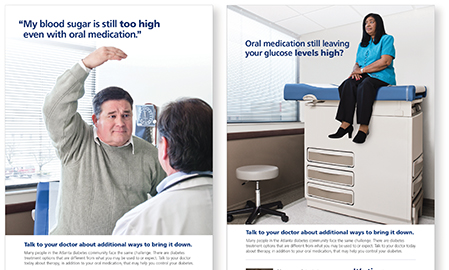Healthcare Regional Marketing prides itself on an approach that few other agencies take, or even consider—taking advantage of regional variations in markets to positively impact financial results. The agency has developed what CEO and principal Bill Goldberg calls a “patented data process” to help identify brand drivers and variations across potentially hundreds of regional and local market segments so brands can adjust their approach accordingly. And while the data process itself may be top secret, the gospel of regionalized marketing certainly is not—in fact, one of HRM’s top priorities is evangelizing to the masses about the value of the second word in its name.
“Brands actually understand that their field force has different issues in different markets,” Goldberg says. “The problem is that they don’t have the resources or the time or the understanding of how to deal with it. Our process will identify what actually drives a brand’s difference in each local market, so that you now have 200 to 300 (discrete) markets.”
Since 300 discrete markets can be an intimidating number, HRM then goes through a virtual grouping process whereby different geographic locations are matched together based on criteria that the agency has found will impact marketing choices. This process can make for some surprising combinations.
“We might group Philadelphia with Seattle or Honolulu as opposed to Philadelphia and Cherry Hill, New Jersey,” Goldberg says. “Because those markets might share important characteristics, and those might not be things you would think of in demographic terms.”
Whatever is going on behind the curtain, it seems to be working. In 2013 HRM enjoyed 30% revenue growth, expanded its business significantly into biologics and on the west coast, grew headcount from 38 to 55, added a third client leadership team, and launched a new alternate channel offering. The alternate channel business in particular was a significant driver of new business growth, according to Goldberg.
“Alternate channel functions much like multi-channel but it’s designed more as an amplification service for the national brand initiatives [through which] we’re able to focus on localized audiences and pull through the national plan on a local basis,” he says. “We do it with what we call a ‘recall center,’ which has a combination of phone, email, direct mail, and a couple of other channels. The idea is, okay, we just did this national campaign and now we need to work on either our problem or opportunity markets – let’s call it extra amplification pull through.”
HRM is looking to expand its footprint by continuing to proselytize for the regional approach. Among other things, the agency is getting ready to launch HRMU, an online university to educate clients and potential clients about regional marketing applications in pharma. And with digital tools allowing for increasing granularity of reach by marketers, Goldberg feels like the world is beating a path to his agency’s door.
“We’re really seeing a big shift to more and more local institutions influencing local markets,” he says. “Digital is making regional marketing more scalable and important to the marketing mix for brands. Scalable solutions that provide local relevancy are becoming more and more critical for brands to be successful.”
From the July 01, 2014 Issue of MM+M - Medical Marketing and Media








